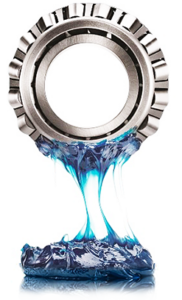Grease Application FAQ
17 Nov 2020, Posted by in General
Can greases be mixed?
Mixing different greases, even those with similar thickener types, can sometimes lead to ineffective lubrication resulting in damage to the lubricated components. If not spotted soon enough this may lead to equipment failure.
Can I add grease between flushing intervals?
Many rolling element bearings require relubrication of small quantities of grease between grease flushing intervals. This is best done with a low-pressure grease gun. If seals are in good condition, the quantity of grease needed may be small and infrequent.
Check the amount of grease in the bearing – remove fitting or grease plug to allow excess grease to come out.
- Check bearings and seals for excess leakage.
- Apply a few “shots” of grease at a time.
How can you avoid incompatibility?
Ahead of applying a new grease, thoroughly clean – or flush out – the previous grease from the bearing. This avoids compatibility issues and helps ensure that the new grease can perform at an optimum level.
If this cannot be carried out, mitigating actions should focus on minimizing the amount of the displaced grease remaining in the application, such as by increasing relubrication frequency to facilitate a purge of old grease in a timely manner.
How important is cleaning excess grease and dirt?
Be sure to clean up all excess grease and dirt from the bearing and surrounding areas. Excess grease and dirt on external surfaces acts as an insulator and prevents heat dissipation. Additionally, excess grease on the external surfaces and floors can introduce a safety hazard to personnel.
How much grease should be applied?
Bearing manufacturers frequently recommend the amount of grease to apply to a bearing by weight or volume. The grease gun can be calibrated by counting the number of shots to dispense a known amount of grease.
How often should you relubricate?
Unfortunately, there’s no one single answer, because there’s a long list of factors that influence relubrication frequency.
Generally, the smaller the bearing and faster the speed, the less frequent the interval for relubrication with grease. Larger, slower bearings require more frequent relubrication.
Different types of bearings require different relubrication frequencies:
- Radial ball = base interval
- Cylindrical roller = 5 times as frequent
- Thrust-ball and roller = 10 times as frequent
What are the responses of over and under lubrication?
An insufficient amount of grease could lead to bearing failure due to a lack of lubrication. On the other hand, over-lubrication can also lead to bearing failure and cause problems due to the migration of the lubricant into the windings.
How full should a bearing be?
A bearing should never be greased more than two-thirds full – leaving one-third air space – to allow for optimal operation.
How to handle replacement bearings
Store your bearings in their original packaging. The best ways to store bearings are horizontally in a dry place and in their original, unopened package. Never place bearings on a dirty surface.
Rotate your bearings while they’re in storage. For greased bearings, periodically turn over sealed and shielded bearings to prevent the grease from settling on one side.
Use identical bearings for replacements. If needed, contact your authorized bearing distributor or manufacturer for interchange information.
Never wash new bearings before installation. The bearing manufacturers take great care to package and ship bearings that are dirt-free and ready for lubrication. There’s really no need to wash them or remove the protective slushing compound.
Have additional questions? We’re here to help! Whether there is an issue or if you need a lubrication analysis, our team of Certified Lubricant Specialists can help with your greasing issues and questions. Contact us today and let’s see how we can assist you!
*Source: Mobil
